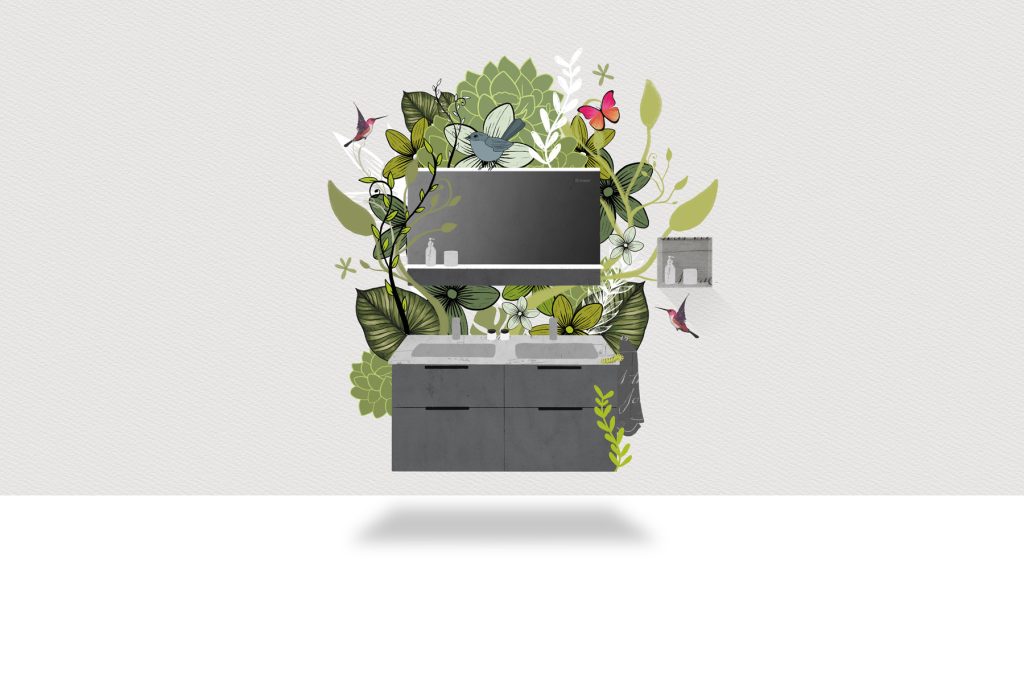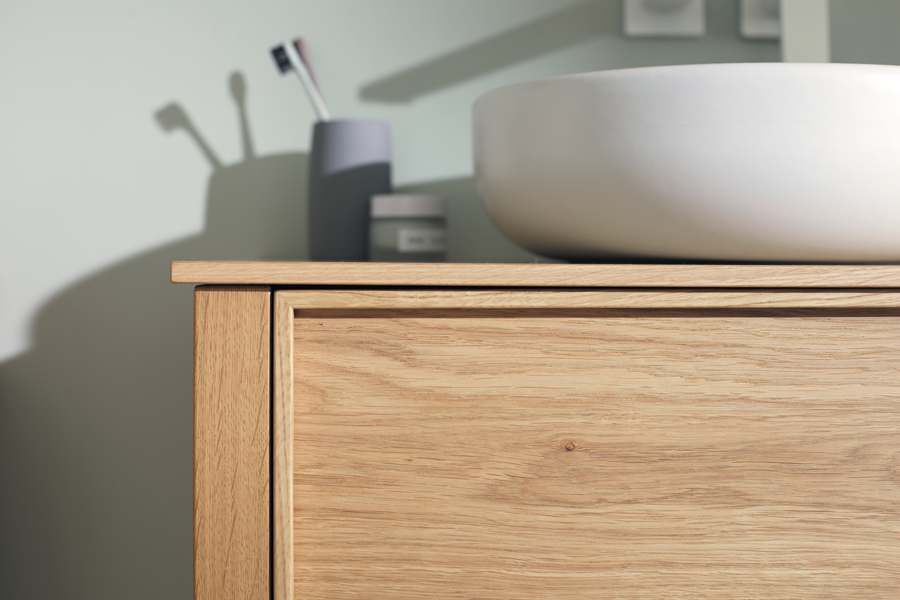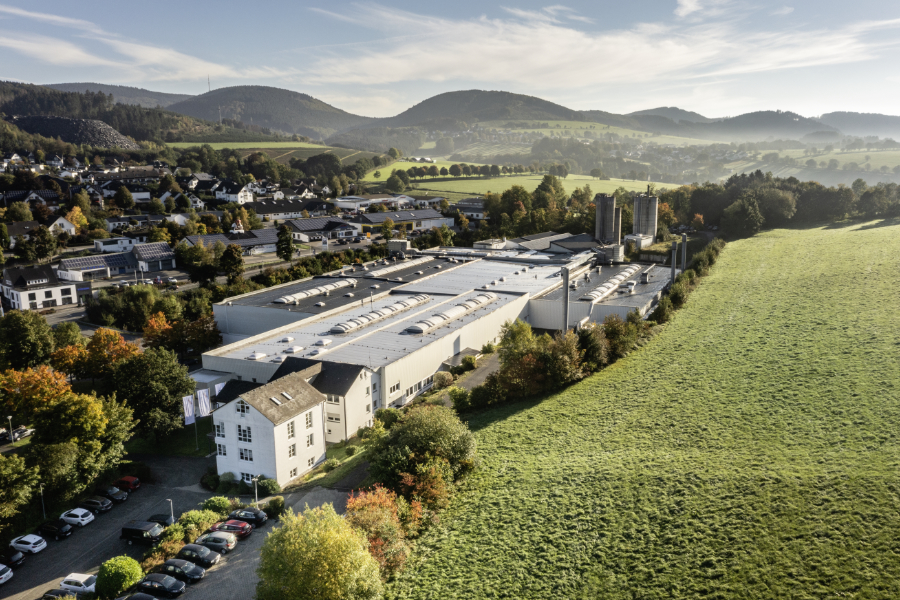Tree planting drive: burgbad reforests local land
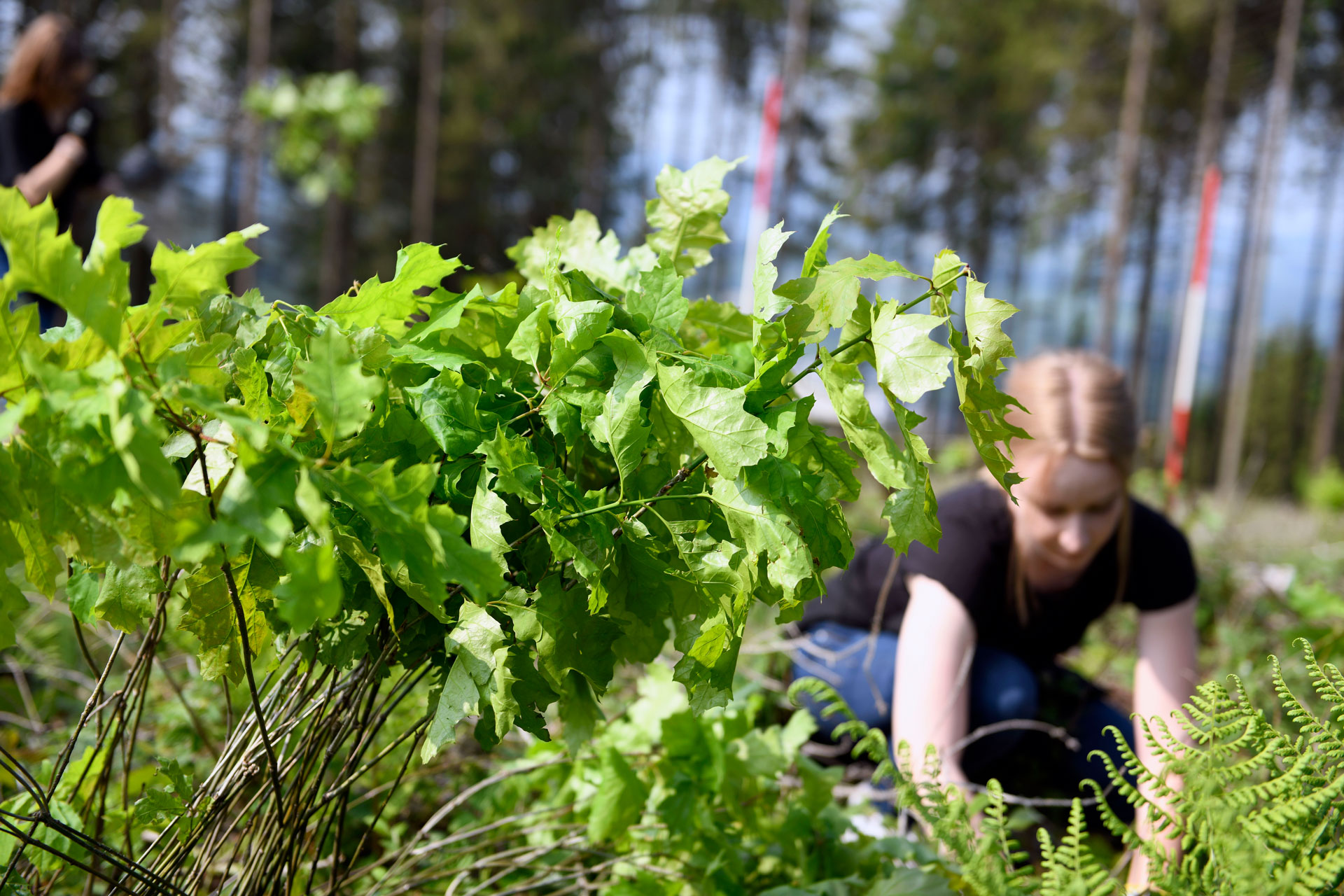
In Germany’s Hochsauerland region, the forest still seems to be doing fine. But even in this part of the country, which isn’t exactly known for its low rainfall and where elevations vary between 600 and 800 metres, there are meanwhile signs of climate damage: grey trees, bare patches and thinning crowns. Bathroom furniture manufacturer burgbad, which is based in Bad Fredeburg near Schmallenberg, is helping to reforest the calamity-affected areas with a tree planting drive. Of the 2,680 hectares of forest belonging to the town of Schmallenberg, approx. 170 hectares – a good 6% – have already been lost to climate-related drought damage and secondary pests – mainly bark beetles. And it’s their flying season again.
“New areas are affected on a daily basis, and we’re constantly having to mark more and more cubic metres of wood that are infested with bark beetles,” says Siegfried Hunker, head forester of Schmallenberg Municipal Forest. At the same time, this development didn’t come as a surprise. “Since 1989/90, when we had the first storms, scientists have been predicting this scenario would happen in 2020/21. Ever since Hurricane Kyrill in 2007 we’ve had one storm here after another, as well as having to battle with dry periods and extreme weather events. I’ve actually been doing disaster management for 20 years now. Over the last few decades, the share of hardwood has been increased enormously and the pure stands of spruce reduced. But the way things look, the spruce will disappear from here entirely in the medium term.”
Corporate involvement and personal commitment are welcome
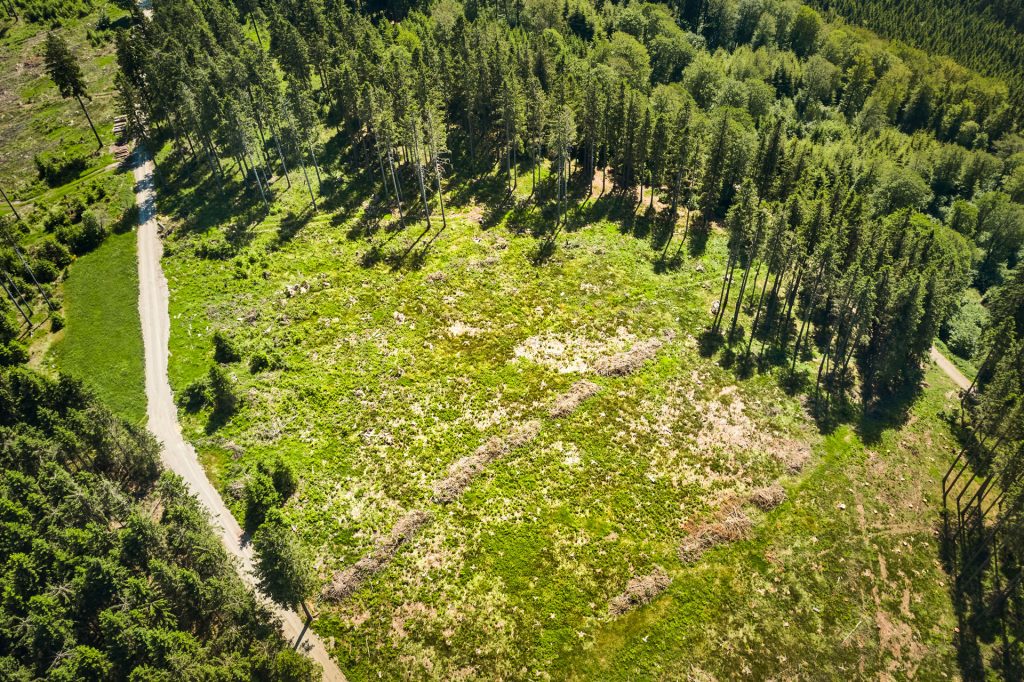
The first measure to result from the new collaboration involved replanting a “beetle gap” covering nearly half a hectare with approx. 1,300 broadleaf saplings sponsored by burgbad. “We’re very grateful for this kind of commitment, especially from companies like burgbad that play a major role at local level,” says Hunker. “We think it’s great, and it’s a huge help to us. And even if it’s ‘only’ half a hectare for now – every half hectare of forward-looking forest, every single tree matters for the future.”
If you talk to the experts, it soon becomes clear that reforestation is an issue that concerns the whole of society: the forest keeps our air clean, captures carbon, creates a favourable microclimate for our natural water springs, protects the soil from erosion, encourages biodiversity, provides us with wood – a raw material that is playing an increasingly important role – as well as providing valuable opportunities for recreation. “Taking care of the forest and reforestation is in the public interest – everyone benefits,” says Siegfried Hunker, summing up just how vital this mission is.
For burgbad, sustainability is a matter of conviction
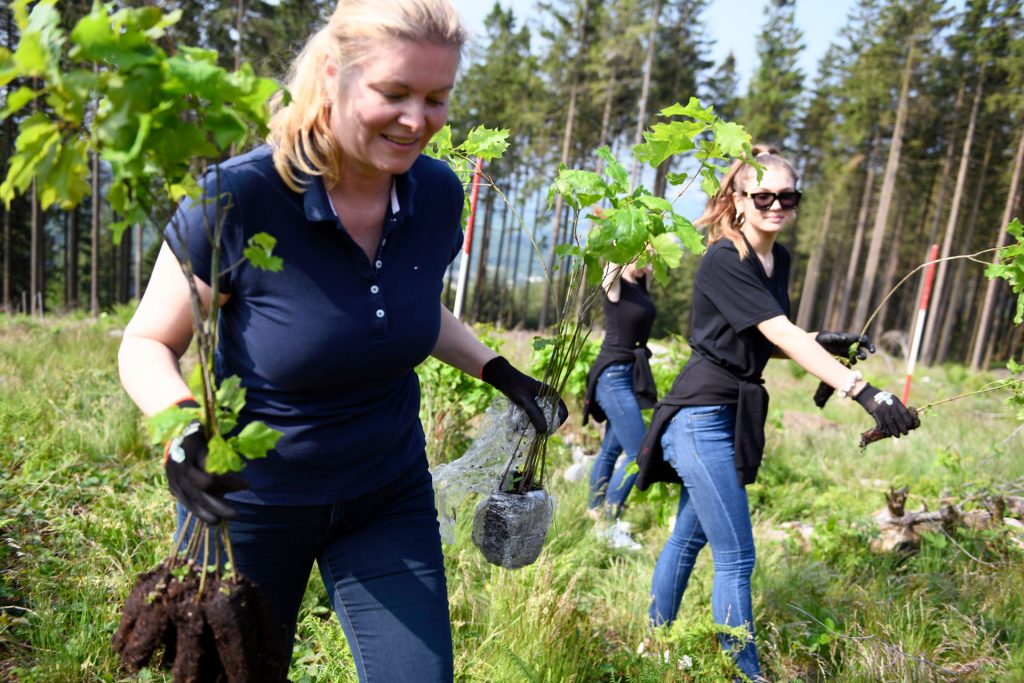
“Today the forest needs us, tomorrow we’ll need the forest,” agrees head of marketing Sabine Meissner, voicing the predominant opinion of the workforce, seven members of which made up the crew of helpers for the team led by district foresters Siegfried Hunker and Christian Bröker when the first joint planting effort got underway in early June 2021. Young members of staff and trainees are particularly enthusiastic about the initiative. The collaboration was launched in honour of the company’s 75th anniversary. Having evolved as a traditional Mittelstand company, burgbad now numbers among the biggest bathroom furniture producers in Europe; its commitment to its home region and the environment are part of the company’s corporate identity. burgbad was recently re-certified as a climate-neutral manufacturer for the fifth time. The company sources its wood-based materials from PEFC-certified, sustainably managed forests and has been championing sustainable furniture for years – as a matter of conviction.
“As a woodworking company, we have a very direct connection with the issue,” says Sabine Meissner, explaining the motivation behind the collaboration. “And even though the majority of the boards we use aren’t made of solid wood, there are more real wood collections and even solid wood ranges in our portfolio again nowadays. The rising price of wood is making it very clear just how dependent we are on this renewable resource in an economic sense as well.” For Siegfried Hunker, the economic aspect of forest management is part of environmental protection. He believes it’s vital to ensure that, in the future too, Germany can continue to produce enough wood to meet its own demand. The global hunger for raw materials is already putting the world’s jungles and rainforests under enormous pressure, so being self–sufficient in wood means helping endangered primeval forests as well.
Planting effort to jump-start natural regeneration
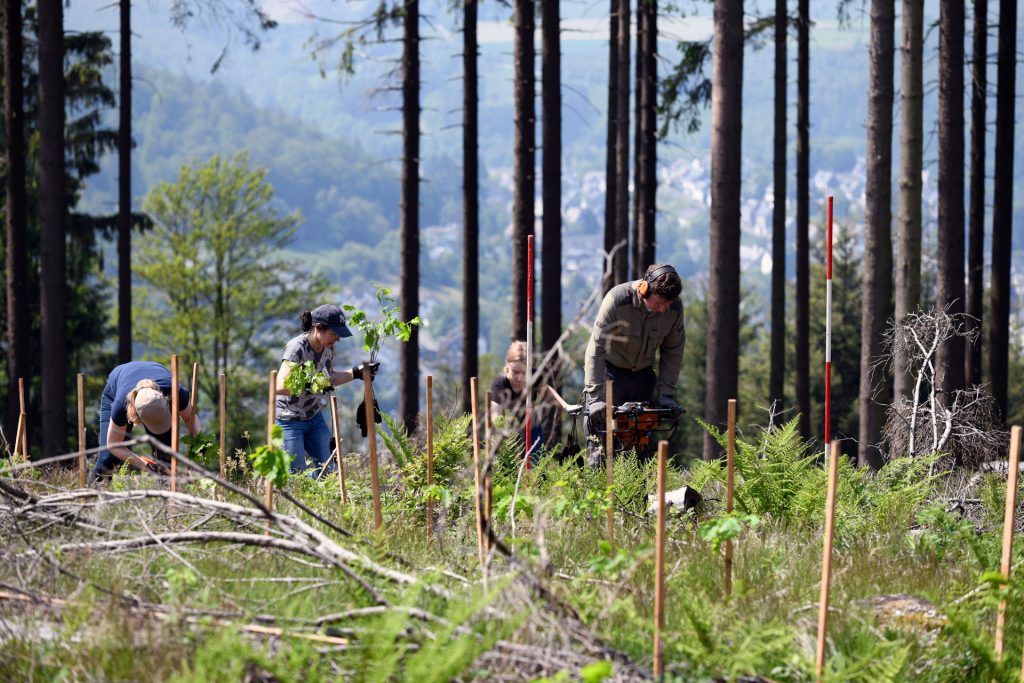
The foresters brief the volunteers on the planting process and soon it’s running like clockwork: along a line marked with ranging poles, holes are made, the saplings inserted, the surrounding soil pressed down, stakes hammered in and the trees attached to them – partly so that they’re easier to find among the rampant vegetation covering the rough ground later on. If you come across a sprouting tree as you work along your line, you simply skip over it so that it’s integrated into the cultivation programme. Because ultimately, the goal is to end up with a near-natural forest that can adapt to climate change without human intervention.
“The idea is to plant the existing gaps with contingents of new tree species that will reach maturity in 30 or 40 years. What we’re doing here is near-natural forest management – the forest is meant to regenerate itself naturally,” explains Hunker. “And these will be the first trees to spread their seeds and reproduce from here.” Future generations will be able to observe which species adapt better to the new conditions. The trees planted here are mostly northern red oaks: thanks to their ability to tolerate a wide range of climatic and soil conditions, they can cope not just with drought and high rainfall but with the relatively low-nutrient, porous soil found in Schmallenberg Municipal Forest. But other types of broadleaf trees from a portfolio of species that are resilient to climate change were also planted, such as suitable varieties of beech and chestnut, black walnut, wild cherry or monarch birch.
An appeal for companies to take responsibility – for their region and the environment
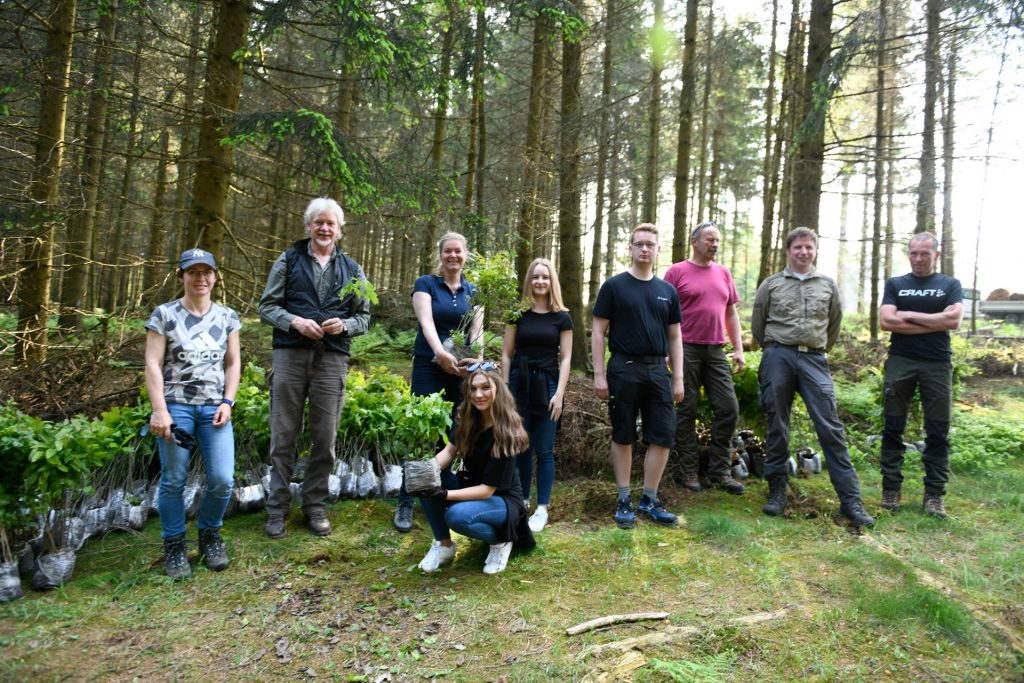
Siegfried Hunker has been seeing growing signs that the forest is sick for years, including sunburn on broadleaf species and needle loss in conifers, windsnap and stress-triggered seed production: “What we’re seeing now is actually just the beginning of the damage to come. That’s why it’s important to set the course now, reforest the affected areas with new types of trees and cultivate them with species that are better equipped to cope with the future.” Sabine Meissner takes a positive view of the planting effort: “The feeling of having gained something is stronger than the sense of having given something. And above all, we’ve learned a lot!” The next planting day is scheduled for the autumn.



